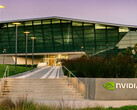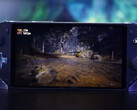AMD's research team has unveiled an advancement in real-time path tracing, rolling out a new neural network approach that combines both denoising and upscaling. This move is aimed squarely at challenging Nvidia's lead in AI-driven graphics technology.
The new technology takes on one of the biggest hurdles in real-time path tracing: pulling off high-quality visuals with only a handful of ray samples per pixel. Normally, path tracing needs thousands of rays per pixel to get those detailed frames, which is why it can take hours to render a single frame in movies. AMD's solution focuses on reconstructing detailed scenes from limited samples through neural network processing.
The neural network AMD is using handles both denoising and upscaling in a single go. Usually, this involves separate steps in most rendering systems, but AMD has managed to cut down on those stages. By processing low-res renders with just one sample per pixel and leveraging temporal accumulation and guide buffers, the system is able to rebuild sharp, high-res images.
This method isn't exactly like Nvidia's DLSS, which breaks up upscaling, frame generation, and ray reconstruction into different parts. DLSS also depends on specialized AI hardware on RTX GPUs, but it's still unclear if AMD's solution will work on current RDNA GPUs or if they'll need new hardware to support it.
AMD's team shared a few main goals they're aiming for with this technology:
- Support for both pure denoising and combined denoising/upscaling modes
- Strong performance at 4K resolution
- Lower input needs than other existing solutions
This advancement may become the backbone of the next-gen FidelityFX Super Resolution (FSR) from AMD. Still, with how power-hungry modern path-traced games are, we'll likely need some beefier hardware to really tap into everything this technology can do.
Source(s)
GPUOpen (in English)
















